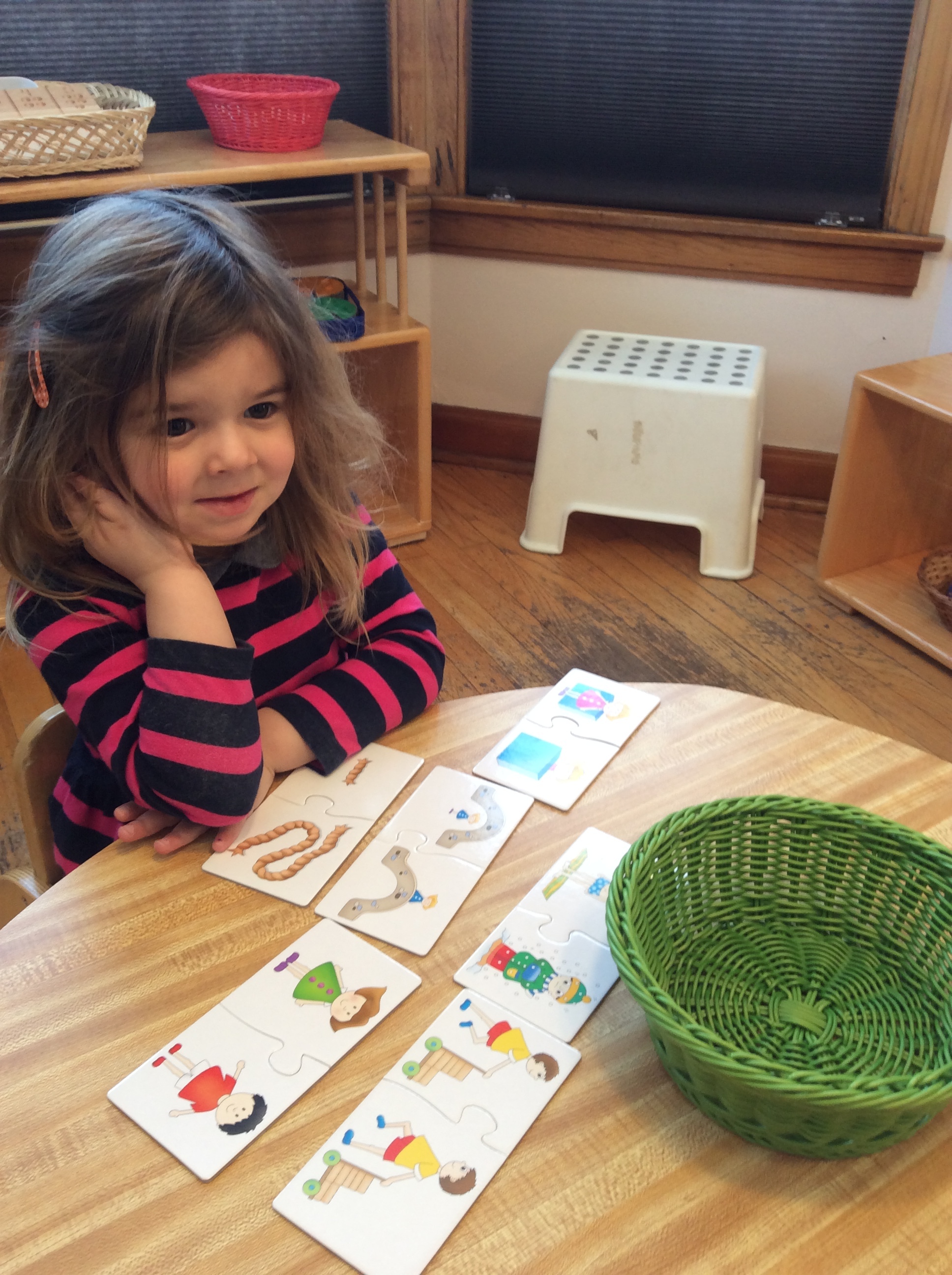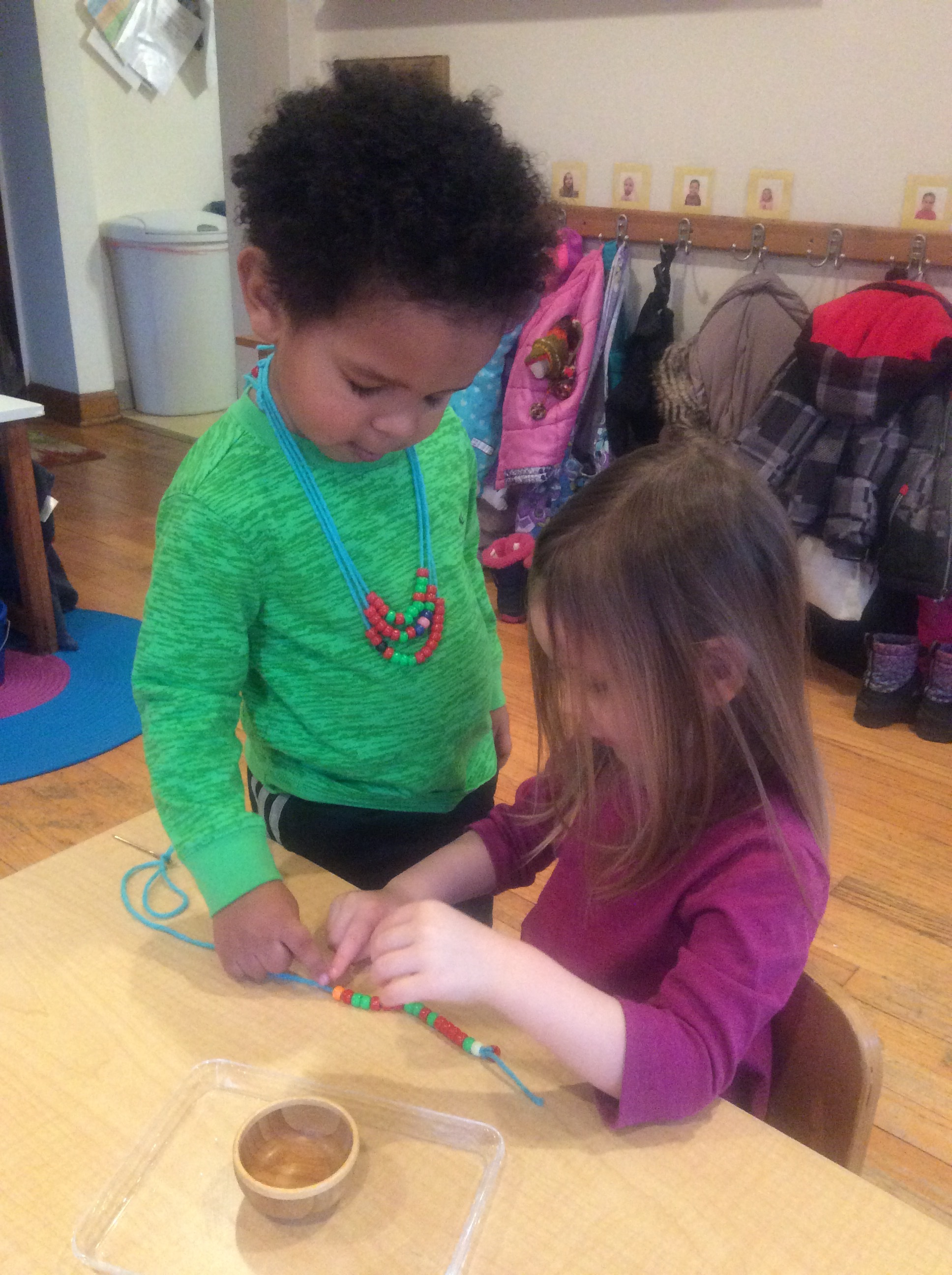Empowering children to discover solutions to lessons and relationships.
Age
3 years - 6 years
Program Year
September through August
Sessions
Extended Day 7:30 a.m. - 1:00 p.m.
Full Day 7:30 a.m. - 6:00 p.m.
Primary Community
Our Primary Program is structured upon the Montessori method of education, and is based on Dr. Maria Montessori’s research using a carefully prepared environment to teach children in mixed age classrooms. Offering a variety of activities as well as a great deal of movement, the setting is equipped with child-sized furnishings in a child-friendly space. Children are able to work freely in the classroom, with the teacher as a guide to facilitate learning that is appropriate for each child to be successful.
The environment fosters a sense of independence with scientifically designed materials that impart the basic concepts of language and math. Lessons in the various subjects are given on an individual basis, and follow each child’s developmental readiness. When able to choose a lesson that responds to a child’s internal need, the child becomes self-directed. Allowing the child to work independently without interruption, they are able to process the lesson in their own way and at their own pace until completion.
Enhancing this process is the design of the Montessori materials, which are self-correcting. This promotes self- esteem, empowering children to discover the solutions to lessons in their own time. The child learns to carry and use the materials to complete a task following an orderly process with each lesson progressing in difficulty. Lessons are arranged from left to right on the work tray to begin training the eyes for reading. Children may choose any piece of work in the class they have had a lesson in to promote self-direction, self-motivation, and success.
Social skills are promoted through a mixed age classroom (3-6 years) which fosters cooperation, respect, relaxed interaction and spontaneous opportunities for conversation. Children are encouraged to resolve conflicts through compromise, negotiate differences and discuss problems.
What are some important benefits of our Primary Community?
Self-Reliance
Concentration
Friendship
Children wash their own dishes every day and are offered the opportunity to practice this life skill regularly.
Curriculum:
Sandpaper letters are an essential tool for language development in the Montessori classroom. They offer a tactile connection to each letter.
Practical Life Area
Children are attracted to the practical life area of the classroom where they see familiar objects like those in their own homes. Through activities involving self-care and care of the classroom environment, the child develops concentration, coordination, focus, order, and independence.
Children are encouraged to explore shape and size to learn basic concepts of geometry. Here, we see a curious student practicing rolling the marble down the "steps."
Language Area
The Montessori language area isolates elements of language, such as phonetic sounds, and offers them to the children as the keys in decoding the mystery of reading. Using multi-sensory tactile equipment, the child uses sense of touch, sight, and sound to learn the lessons. Lessons start with concrete pre-reading materials and proceed to the more abstract concept of reading. Sandpaper letters are felt while the sound of each letter is repeated. Eventually the child combines these letters and sounds with the moveable alphabet to form phonetic words. The child progresses through the tracing and recognition of letters to beginning writing in formal exercises. Language presentations progress as the child gains fluency in reading to include the first experiences of parts of speech and functions of words.
SPANISH LANGUAGE
Every day at lunch time, we spend the hour speaking in Spanish. We find this is the right amount of time to introduce children to another language. In this way, we use the concept of immersion within the parameters of a regular, predictable activity. The children learn tangible words for food and serving ware while also being introduced to common phrases and commands.
Math Area
The Montessori mathematics area can be broken down into precise components. The first includes the identification of numbers one through ten. Similar to the language area, sandpaper numbers are used as the child learns to recognize the numbers and acquires the ability to associate the quantity with the written symbol. The decimal system is then introduced, using concrete materials which allow the child to see, feel, add, multiply, subtract, and divide up to 9,999. Squaring and cubing chains are introduced and the child delights in laying out the extremely long ten chain. By working with concrete materials, the child develops a solid basis for understanding the decimal system, geometric forms, and basic arithmetic operations.
Sensorial Area
Each sensorial material in this area isolates one defining concept such as color, weight, shape, texture, sound, and smell. The materials are self-correcting and allow the child to categorize, isolate, and distinguish between the qualities the child is learning. Designed to sharpen the child’s five senses, these exercises help the child to understand sensory impressions.











